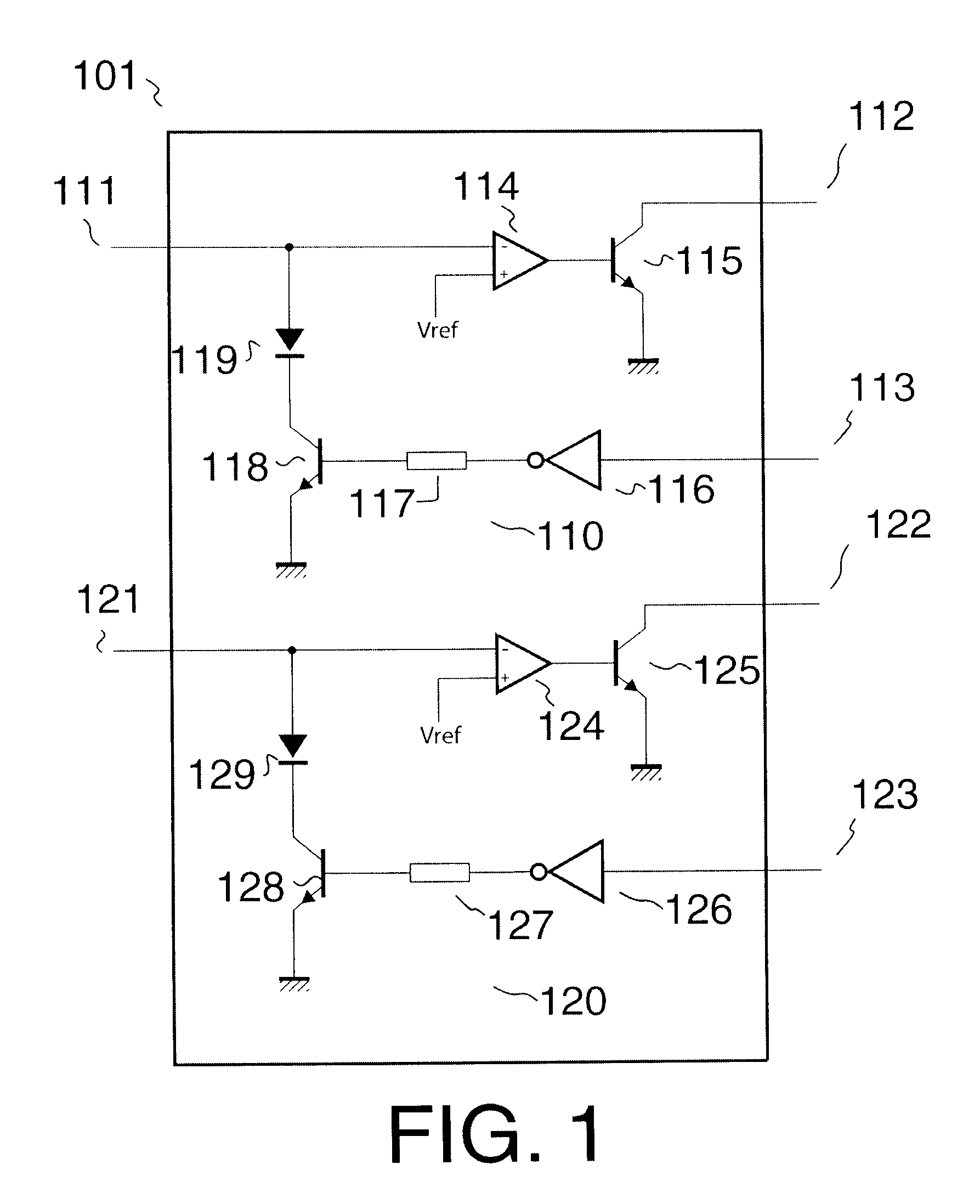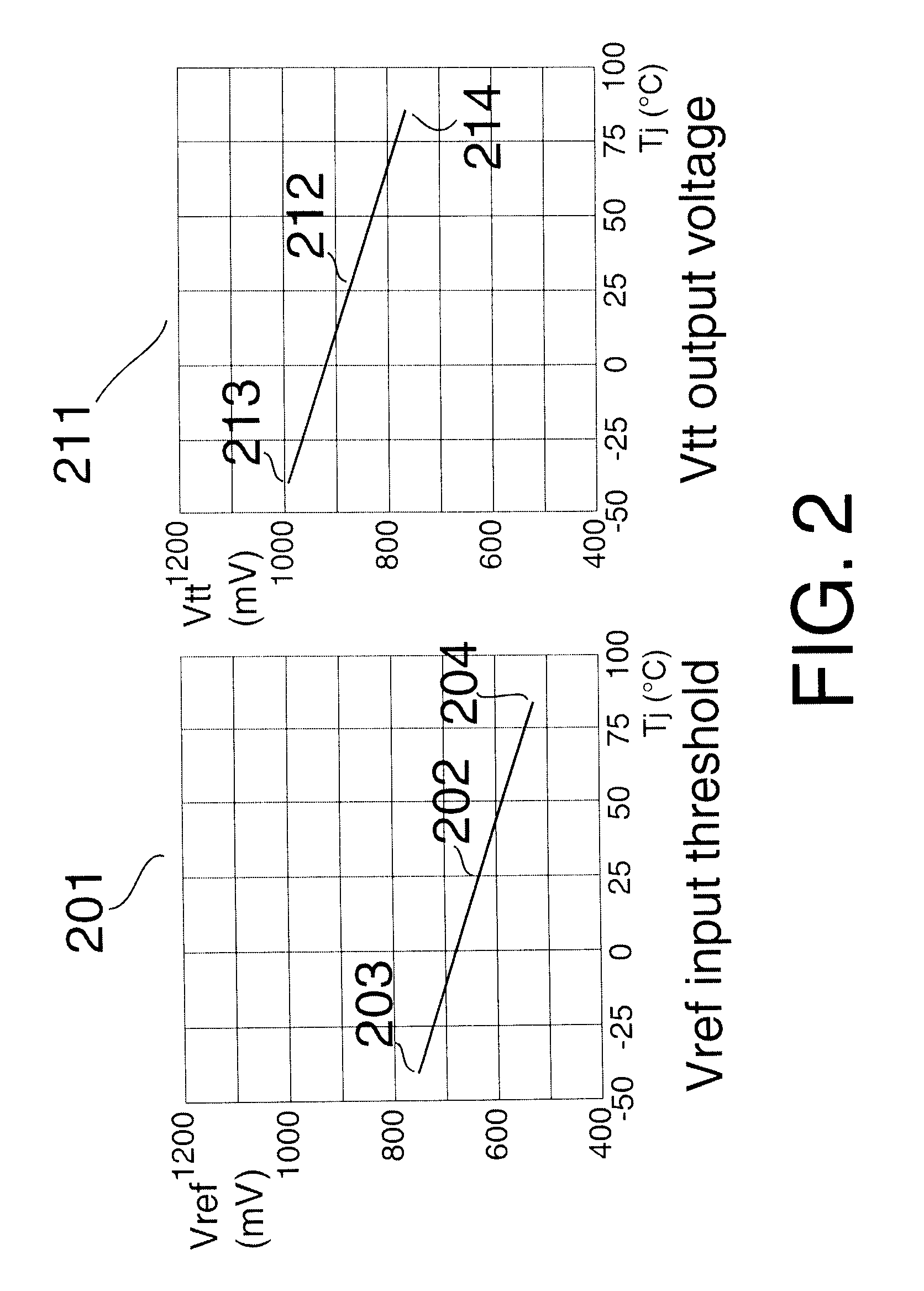Bi-directional signal transmission system
a transmission system and bi-directional technology, applied in the direction of logic circuits, logic circuit coupling/interface arrangements, electrical devices, etc., can solve the problems of affecting the i2c function of the bus, the maximum possible speed of the bus, and the possibility of oscillation in such a loop
- Summary
- Abstract
- Description
- Claims
- Application Information
AI Technical Summary
Benefits of technology
Problems solved by technology
Method used
Image
Examples
Embodiment Construction
[0032]FIG. 1 shows the structure of the OM1896 buffer as described in U.S. Pat. No. 6,014,040. In this circuit the OM1896 integrated circuit 101 contains two identical buffers. The input connected to the first bi-directional signal path 111 is normally pulled high by the pull-up mechanism on that signal path. When it is high the input voltage is more positive than the reference voltage Vref on the comparator 114. This puts a low level on the base of transistor 115, and the output connected to the second bi-directional signal path 112 is able to be pulled high by the pull-up mechanism on that path.
[0033]With temperature the medium reference voltage Vref is designed to follow the low voltage generated by a low logic signal on the reverse input 113, and in the OM1896 is normally made up of a transistor circuit based on a single transistor emitter base voltage reduced by an offset voltage component generated by the voltage drop derived from the voltage across an integrated resistor carr...
PUM
 Login to View More
Login to View More Abstract
Description
Claims
Application Information
 Login to View More
Login to View More - R&D
- Intellectual Property
- Life Sciences
- Materials
- Tech Scout
- Unparalleled Data Quality
- Higher Quality Content
- 60% Fewer Hallucinations
Browse by: Latest US Patents, China's latest patents, Technical Efficacy Thesaurus, Application Domain, Technology Topic, Popular Technical Reports.
© 2025 PatSnap. All rights reserved.Legal|Privacy policy|Modern Slavery Act Transparency Statement|Sitemap|About US| Contact US: help@patsnap.com



